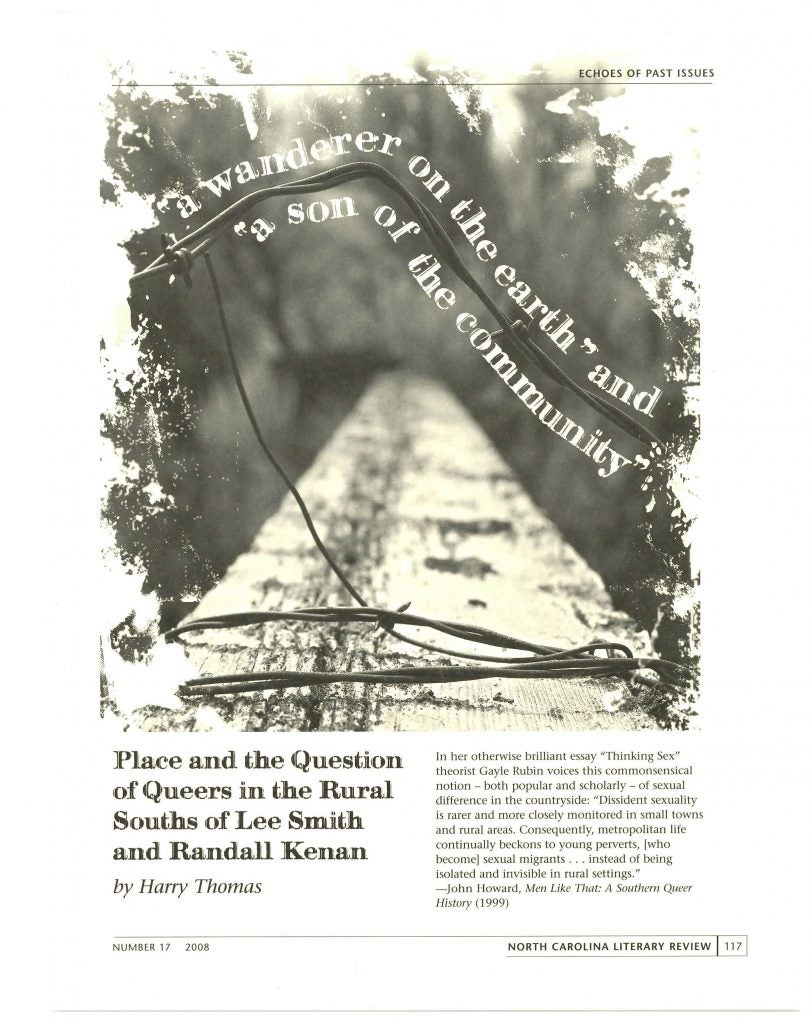Friday from the Archives: “A Wanderer of the Earth and a Son of the Community: Place and the Question of Queers in the Rural Souths of Lee Smith and Randall Kenan” by Harry Thomas from NCLR 17 (2008).
“In an endnote contained within his The Queer Renaissance (1997), critic Robert McRuer says that “migration-to-the-big-city novels could compete against coming-out stories for the title of ‘Most Common Lesbian/Gay Genre.”” This trope may be even more true for stories of queer folks from the South. The very lived experiences of some of our best-known out writers — e.g.: Allan Gurganus, David Sedaris — would argue for the “must move away” rhetoric.
Author Harry Thomas argues against this device by examining two novels set in North Carolina. He writes, “Although these writers are, in many ways, markedly different – Smith is a white, heterosexual woman writing about Appalachia; Kenan is a Black, gay man writing about southeastern North Carolina – both Oral History and A Visitation of Spirits deal, albeit in different ways, with characters whose gender performance and/or sexuality lies outside the norm within their rural Southern communities.”
“Queer people and queer sex do not, in Kenan’s work, exist only in cities.”
Harry Thomas
Thomas first examines Smith’s character Jink, providing textual evidence for his queer identities and also his decision to move to San Francisco, the West Coast apotheosis of homosexual culture. Then he delves into Kenan’s character Horace, who stays in small-town Tims Creek, North Carolina. Thomas explains, “In traditional coming-out narratives, one of the reasons to flee to the city is that the environment provides a chance to meet and engage in sexual relations with other queers. But Kenan writes against this configuration of queer sexuality and geography in Visitation. Tortured and conflicted about his sexuality as he may be, Horace is not the only queer in Tims Creek and does not have to travel to New York or San Francisco or even Raleigh to experience his homosexual awakening.”
The essay makes a fine point about the intersectionality of queerness in the South. None of these characters as drawn by Smith and Kenan are one dimensional: neither their queerness nor their skin color nor their class serves to define how they move through their community. However, their fictional intersectional identities don’t save them in the end, unfortunately. The stories do show how “…the rural Southern community …is revealed to be no simple monolith. It is a complex, contradictory entity, inhabited by a range of people with a range of beliefs.”
To read the entire article order the 2008 issue for your collection.
